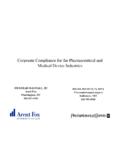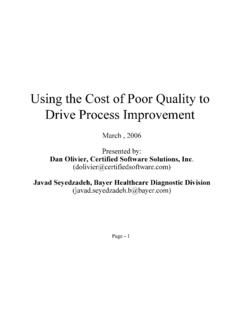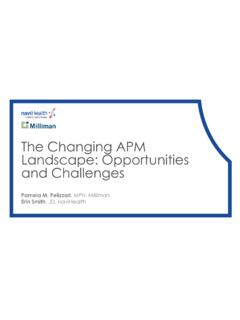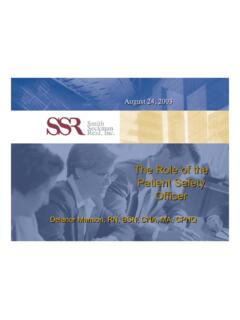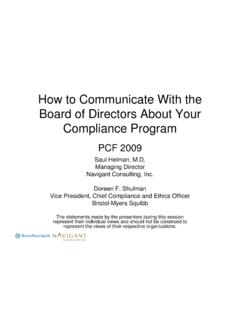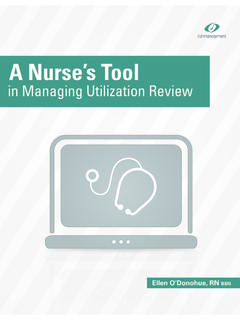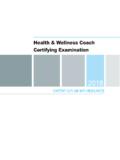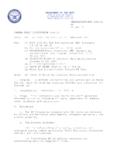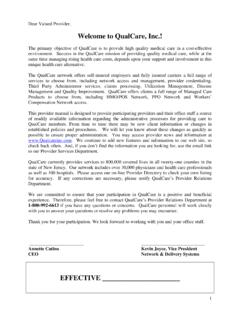Transcription of An Enhanced Discharge Planning Program and …
1 Readmissions Tools: An Enhanced Discharge Planning Program and Project BOOST. Robyn Golden, LCSW. Director of Older Adult programs Rush University Medical Center Chicago, Illinois The hospital of the future will be a health center, not just a medical center the hospital will offer valuable resources to the community on matters of health and well-being, and will be held increasingly accountable for the community's health status.. --Shi & Singh, 2004. 2010 RUSH University Medical Center Objectives Present the process by which Rush developed a transitional care Program Present how Rush provides transitional care to older adults and other at-risk populations Enhanced Discharge Planning Program Project BOOST. Other projects Present the future of transitional care at Rush and in Illinois 2010 RUSH University Medical Center Rush University Medical Center in the heart of Chicago Rush is located minutes from downtown Chicago in the West Side Medical District 676 staffed beds (72 rehab).
2 27 patient care units 495 ADC. 2,276 births 30,012 admissions ALOS. 169,547 patient days 19,929 surgeries 49,773 emergency department visits 2010 RUSH University Medical Center Care Coordination Principles at Rush Commitment to improving patient outcomes through the adoption of best practices Data driven and evidence based In consideration of regulatory and publicly reported measures Sensitive to human and financial resources With patient and family involvement Accountability and communication across disciplines Maximize each disciplines' role in care coordination Spirit of openness and willingness to look at things differently and change 2010 RUSH University Medical Center Rush Enhanced Discharge Planning Program Short-term telephonic care coordination Provided by Master's-prepared social workers For older adults at risk for adverse events after an inpatient hospitalization 2010 RUSH University Medical Center Rush EDPP: History Collaboration between Rush Older Adult programs and Case Management Department Performed between March 2007 and May 2009.
3 Piloted on 4 units at RUMC. Created to address a need seen by hospital staff 2010 RUSH University Medical Center Rush EDPP: Goals Promote patient safety and quality of life Improve health outcomes and the patient experience Reduce unnecessary healthcare costs for older adults Target major causes of preventable readmissions Create a bridge between the hospital and the community Ensure the direction provided by the medical team is not lost Provide referrals to important community services for older adults 2010 RUSH University Medical Center Rush EDPP: Vision Develop Discharge standards of care Identify gaps in service for policy and systems change Encourage community involvement and support for older adults at risk for rehospitalization Determine issues requiring the most assistance after Discharge 2010 RUSH University Medical Center Rush EDPP: Key Components Follows a basic protocol Biopsychosocial and environmental framework to determine patient needs Evaluation of patients'.
4 Expectations and ability to follow the Discharge plan of care Intervention around issues arising as a result of a complicated transition Collaboration with existing providers to promote better health outcomes and quality of life 2010 RUSH University Medical Center Rush EDPP: Systems Framework Healthcare Services & Policies EDPP. The Client Rush EDPP: Social Worker Short-term Bio/psycho/social characteristics Care Coordination Personal characteristics Environmental factors Professional background Client abilities, Worker Helping roles Healthcare problem or change activities, + Skills and Practice frameworks and Techniques Practice principles decisions Aging Network Services & Policies Adapted from Sheafer, , Harejsi, , and Horejsi, (2000). Techniques and Guidelines for Social Work Practice. Fifth ed. New Jersey: Allyn and Bacon. Rush EDPP: Research Created to test EDPP's impact In response to national imperative 30-day readmissions Health care reform Required standardization of EDPP.
5 Model Referral procedure Assessment Intervention 2010 RUSH University Medical Center EDPP Step 1: Referral Rush EDPP Referral Criteria Must meet all the following criteria: Eligible patients referred Aged 65+ through electronic report Speak English Discharged to home or home with assistance Eligibility criteria based 7+ medications prescribed Without a primary diagnosis of transplant upon: Must also meet one additional Review of literature criterion: Trends observed Lives alone during Program 's pilot Without a source of emotional support Without a support system for care in place Feedback from Rush Discharged with a service referral High falls risk case managers Inpatient hospitalization in past 12 months Identified in-depth psychosocial need High risk medication prescribed 2010 RUSH University Medical Center EDPP Step 2: Pre-assessment Upon receiving an electronic referral, the EDPP Social Worker: Reviews the patient record and case management notes for relevant medical and psychosocial information Investigates previous hospitalizations as required Identifies potential problem areas requiring in- depth assessment Generates a list of questions addressing potential problem areas Seeks information about and clarification of patient situation from inpatient case manager as necessary 2010 RUSH University Medical Center EDPP Step 3: Telephonic Assessment The EDPP Social Worker calls the patient or caregiver within 2 working days of Discharge Performs a basic biopsychosocial assessment Goals of the initial post- Discharge assessment Stabilize existing post- Discharge situation Ensure the patient and family follow up with medical providers and are receiving appropriate health care and community services 2010 RUSH University Medical Center EDPP Step 3.
6 Telephonic Assessment Next, the EDPP Social Worker asks targeted questions Questions regarding potential problem areas suspected during the pre-assessment Questions regarding issues identified during the assessment For example, if a patient is identified as having potential transportation difficulties: How do you get around outside your home? Who assists you in getting to appointments? 2010 RUSH University Medical Center EDPP Step 4: Intervention EDPP Social Worker intervenes around identified issues For example, if a patient has transportation difficulties: Provide information, literature, and/or resources related to transportation programs Refer to community-based, faith-based, and/or aging network resources that can provide the service EDPP Social Worker completes the intervention loop until issues resolved 2010 RUSH University Medical Center EDPP Step 4: Intervention EDPP social worker performs telephonic biopsychosocial assessment EDPP social worker provides emotional support; education.
7 Self- management, medication, and No: EDPP social community resource information EDPP Social Worker worker contacts reconnects with necessary third patient parties on patient's behalf Yes: Patient and/or Is follow caregiver reconnects with Yes: up with service EDPP social worker Can patient or providers, caregivers, caregiver contact healthcare professionals, necessary community resources parties? necessary? Does patient and/or caregiver need more information Yes: EDPP social worker or support? provides contact information for necessary parties to patient/caregiver Intervention Loop No: Provide local aging resource center's contact information for future consult, close case EDPP Randomized Controlled Trial Randomized controlled trial between June 2009 and February 2010. 720 participants 360 intervention group Receiving full EDPP intervention upon Discharge 360 control group Receiving usual care upon Discharge 2010 RUSH University Medical Center Prevalence of Unmet Needs of intervention group patients had issues identified by an EDPP.
8 Clinician upon Discharge For of these individuals, problems did not emerge until post- Discharge On average, resolving issues identified during the initial assessment required: days calls 2010 RUSH University Medical Center EDPP RCT: Utilization Physician Follow-Up Intervention Usual Care No 27 34. Yes 239 205. Rate = , p=.001. Intervention Group participants are more likely to make and keep follow-up appointments Readmission, emergency department usage, and nursing home placement currently under analysis 2010 RUSH University Medical Center EDPP: Most Common Problem Areas Coping with change Caregiver burden or stress Management of post- Discharge medical care Obtaining community services Follow-up needed with home health care Coordinating care among providers Management of new treatment or diagnosis Understanding the Discharge plan Medication reconciliation Understanding medication instructions Transportation services 0% 5% 10% 15% 20% 25% 30% 35% 40%. 2010 RUSH University Medical Center EDPP: Most Common Interventions Link patient to Rush services, Provide emotional support, Coach on patient advocacy, rights, and responsibilities, Provide information, literature, and/or resources around identified issue, Facilitate communication between patient/caregiver and service provider, Facilitate transfer of information, Communicate with and support identified caregiver, Assist in decision-making, 2010 RUSH University Medical Center Rush EDPP: Patient Satisfaction I may need more resources, but now I.
9 Know where to call. There's so much out there I didn't know, but I'm now aware thanks to the social worker I'm so happy with the quick attention I. received after I left the hospital.. 2010 RUSH University Medical Center Other programs at Rush Other programs are happening simultaneously at Rush to improve transitional care for patients Project BOOST. Collaborative Care Model Conjestive Heart Failure Program Anticoagulation Program 2010 RUSH University Medical Center Project BOOST. Project BOOST: Better Outcomes for Older Adults through Safe Transitions Society of Hospital Medicine initiative to create and implement transitional care best practices Improves the transition process by improving care across the continuum through the following elements: Team communication Content of the Discharge summary Patient education through teach back Medication safety and polypharmacy Symptom management Discharge and follow-up care 2010 RUSH University Medical Center Project BOOST: Principal Tool TARGET: Tool for Adjusting Risk: A Geriatric Evaluation for Transitions 7P Risk Scale Prior hospitalization Problem medication Punk (Depression).
10 Principal Diagnosis Polypharmacy Poor health literacy Patient support Risk specific checklist GAP: General Assessment of Preparedness 2010 RUSH University Medical Center Project BOOST: GAP. At admission: Caregivers and social support circle for patient identified Functional status evaluation completed Cognitive status assessed Abuse/neglect presence assessed Substance abuse/dependence evaluated Advanced Care Planning documented 2010 RUSH University Medical Center Project BOOST: GAP. Prior to Discharge : Functional status evaluation completed Cognitive status assessed Ability to obtain medications confirmed Responsible party for ensuring medication adherence identified and prepared (if not patient). Home preparation for patient's arrival (eg, medical equipment, safety evaluation, food). Financial resources for care needs assessed Transportation home arranged Access (eg, keys) to home ensured Support circle for patient identified 2010 RUSH University Medical Center Project BOOST: GAP.
